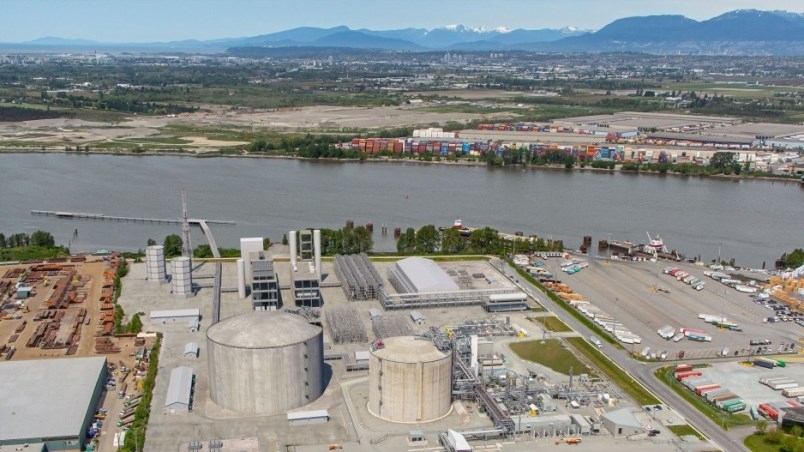My last column explained why attempting to replace fossil-fueled electricity generation with wind and solar energy is “technically impossible and economically disastrous.” But what can Canada do to reduce global C02 emissions while also creating substantial economic benefits?
The answer: Export Liquefied Natural Gas (LNG) to replace coal-fueled electricity generation, thus cutting coal plant emissions in half while creating tens of thousands of jobs and hundreds of billions of dollars in economic benefits.
The impact of replacing coal with natural gas is clearly illustrated south of the border, where it has helped drive down U.S. emissions by 14 per cent since 2005. Switching from coal to natural gas has also been a key driver of the European Union’s world-leading emissions reduction. Meanwhile, non-OECD [Organisation for Economic Co-operation and Development] emissions keep going up and now account for nearly three-quarters of the global total.
China, the world’s largest emitter of CO2, derives 70 per cent of its electricity from coal. Plants fueled by coal also emit toxic compounds and lung-clogging particulates that lower life expectancy by as much as 10 years for the millions of citizens living in smog-darkened cities.
It’s that health crisis, not CO2 emissions, that’s driving President Xi Jinping’s government to convert coal plants to natural gas.
China needs to increase LNG imports substantially to accomplish that, an objective made more challenging as, even during the pandemic, economic growth continues to drive electricity demand. This makes the country’s thirst for LNG virtually limitless. China is already the second-largest LNG importer behind Japan and plans to double its imports over the next three years.
Enormous natural gas reserves and the relative proximity of our northwest coast to Chinese ports make Canada ideally suited to supply that demand. Just as our landlocked oil is being sold to the U.S. at heavily discounted captive-market prices, so too is our natural gas.
The Asian LNG market represents the only hope for beleaguered gas producers to achieve international market prices. After 10 years and billions of dollars spent by more than a dozen industry consortiums, that hope centres on one project: the $40-billion LNG Canada project, largest in Canadian history, that is under construction in Kitimat.
The Coastal GasLink pipeline from northeast B.C. gas fields is also under construction. As LNG Canada’s mid-decade startup date moves closer, economically stressed towns like Dawson Creek and Fort St. John are experiencing a major economic uplift as drilling, processing plants and connecting pipeline construction intensifies.
LNG Canada’s shareholders include state-controlled PetroChina. Replacing China’s coal-generated electricity with LNG Canada’s natural gas represents a global emissions reduction equivalent to taking up to 80 per cent of all cars off Canadian roads, which would be a much greater achievement than will be produced by all of the Trudeau government’s economically debilitating and nationally divisive carbon taxes and green subsidies put together.
Plus: tens of thousands of well-paying jobs and billions in tax revenues and foreign exchange will be created.
For this project to finally be under construction, after more than a decade of navigating Canada’s byzantine regulatory process, and while facing conflicting First Nations claims and determined opposition from well-funded international environmentalist organizations, is testimony to the determination and resiliency of the project’s leader, South African-born engineer Andy Calitz.
Without him, the project would have joined the already crowded LNG project graveyard.
In 2010, there were more than 20 projects proposed for the B.C. coast. The most significant were ExxonMobil’s $25-billion West Coast Canada project, Chinese state-owned CNOOC’s $28-billion Aurora project and Malaysian firm Petronas’s $36-billion Pacific Northwest project.
Given the global emissions reduction and economic benefits of just one project, imagine the impact if even one or two more had crossed the finish line.
The only other major project left standing is Kitimat LNG, and its future is in jeopardy. Equal in size to LNG Canada, the project is sponsored by American-owned Chevron Canada and Australian LNG pioneer Woodside Energy.
Regulatory approvals had finally been obtained and site preparation was under way when, in late 2019, Chevron announced its intention to sell its 50 per cent interest. Those close to the Chevron project believe the federal government’s weak response to the blockades of LNG Canada’s gas supply pipeline led by non-elected Wet’suwet’en First Nation honourary chiefs was the proverbial last straw for Chevron.
Exporting LNG to displace coal is a powerful way for Canada to be a leader in helping reduce global emissions.
And yet one of the most perplexing barriers for LNG project sponsors is the fixation of Canadian regulators on the project’s domestic emissions, which are minuscule in comparison with their enormous global reduction.
Before the December 2018 UN Climate Change Conference in Katowice, Poland, the federal Conservative Party urged the leaders of the Canadian delegation to propose that achievement of national emissions reduction targets include reduced foreign emissions from LNG exports. But this made far too much common sense for Prime Minister Justin Trudeau and his Gerald Butts-led team of anti-fossil fuel eco-zealots.
So not even Canada itself pushed what could be a big made-in-Canada contribution to global emissions reduction.
– Gwyn Morgan is a retired business leader who has been a director of five global corporations.



